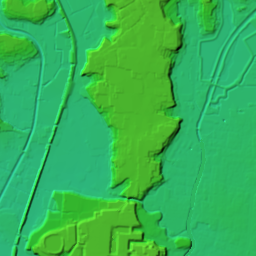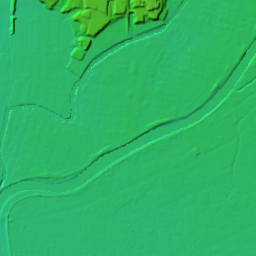次の地震に備えるためにはどうすればよいのでしょうか?
What should be the plan to be prepared for the next earthquake?
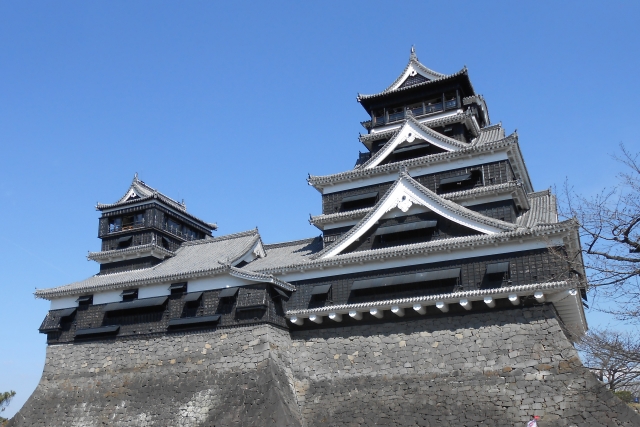
何が起こったか~What happened?
2016年に熊本地震が起きてから3年以上経過しました。この地震により熊本県には甚大な被害が発生し、熊本城も同様でした。城にとって最も深刻だったのが、50か所に渡り石垣が崩壊したことでした。石垣の崩壊により、多くの建物が倒壊したり、破損または深刻な状態に陥りました。現存する日本の城壁の中では一番長く、重要文化財に指定されている長塀は、全長242mのうち80mが崩壊しました。
Over 3 years have passed since the 2016 Kumamoto Earthquakes. They caused great damage to the area in Kumamoto Prefecture including Kumamoto Castle. For the castle, the most serious factor could be the collapse of stone walls in 50 points. With the collapse, many buildings were either torn down, were broken or are in critical condition. The Long Wall, the longest among the remaining castle walls in Japan, designated as an important cultural property, collapsed over 80m out of 242m in total.
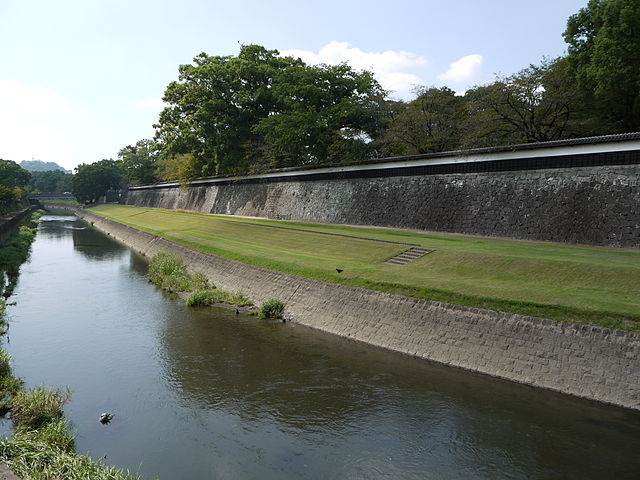
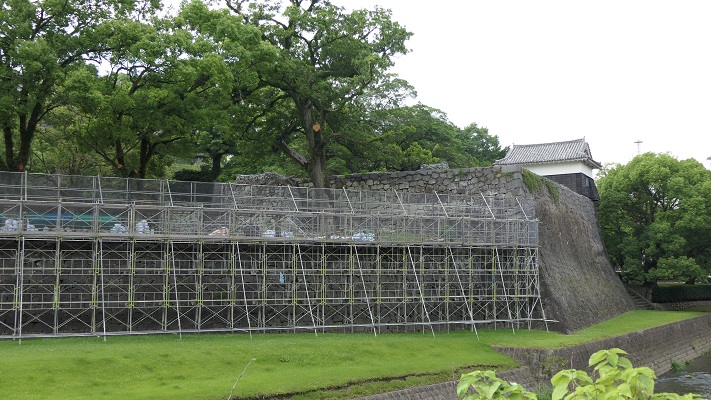
もう一つの重要文化財である東十八間櫓は、石垣とともに完全に倒壊しました。
Another important cultural property, Higashi-Juhakken Turret also torn down completely with stone walls.
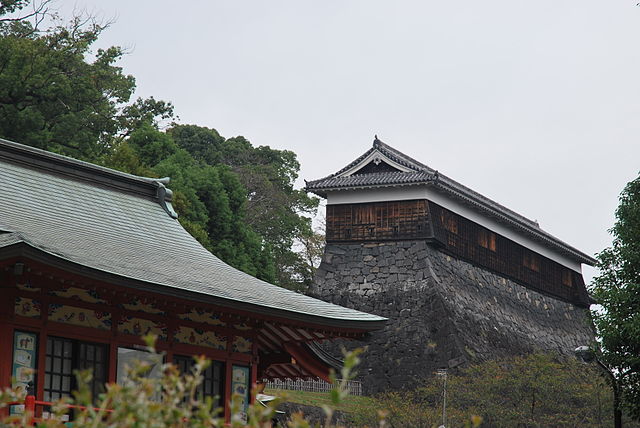
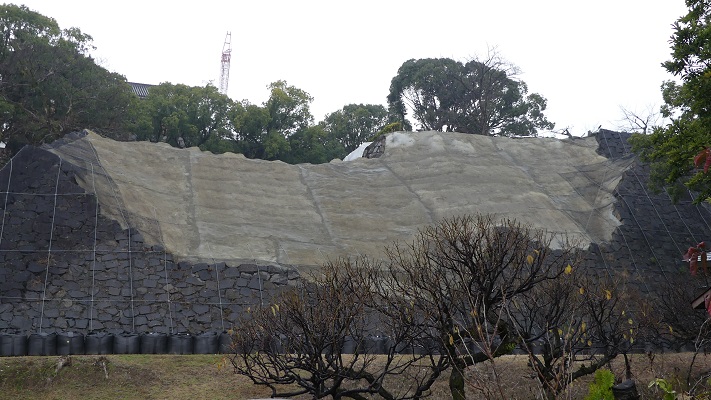
最近復元された建物もまた被害を受けました。特に飯田丸五階櫓は、わずかに片隅の石垣によって支えられている「奇跡の一本石垣」として注目されました。
Recently restored building also suffered, in particular, Iidamaru-five-layer-turret was focused on for being supported by only one corner stone to survive, known as “the miracle lone stone walls”.
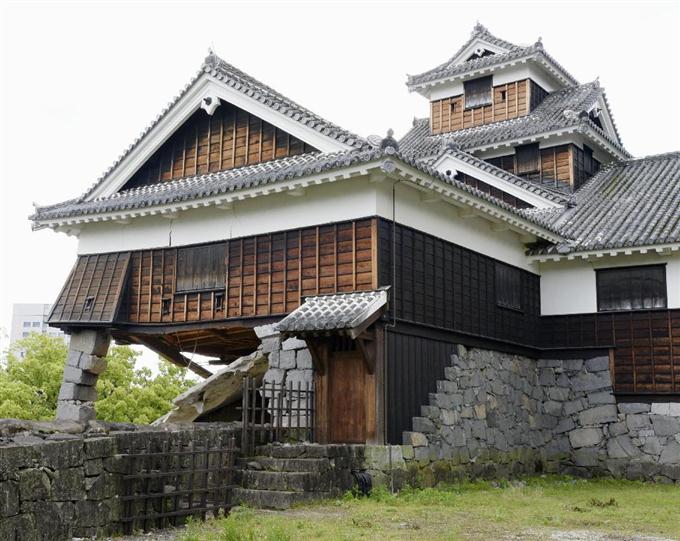
乾櫓も同じような状況でした。
Inui-turret has had a similar situation.
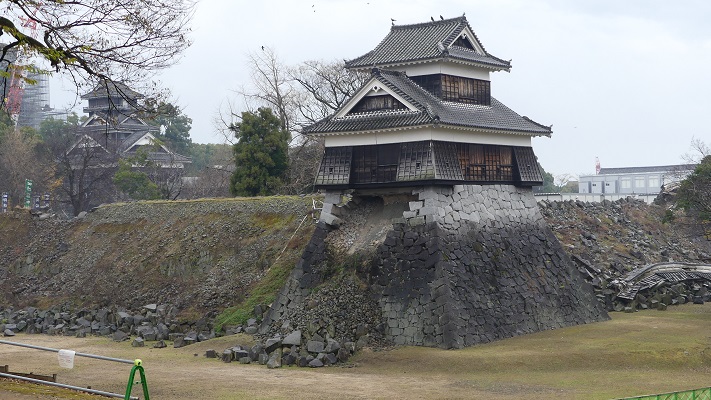
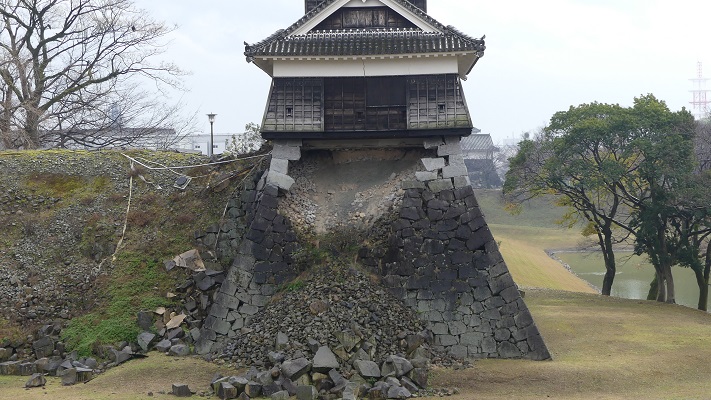
1960年に現代の工法で外観復元された天守も被害を免れませんでした。ほとんどの屋根瓦が地震で剝げ落ちてしまったのです。
The Tenshu keep, which was apparently restored in the modern way in 1960, was not without suffering. Almost all of its roof tiles were peeled off by the earthquakes.
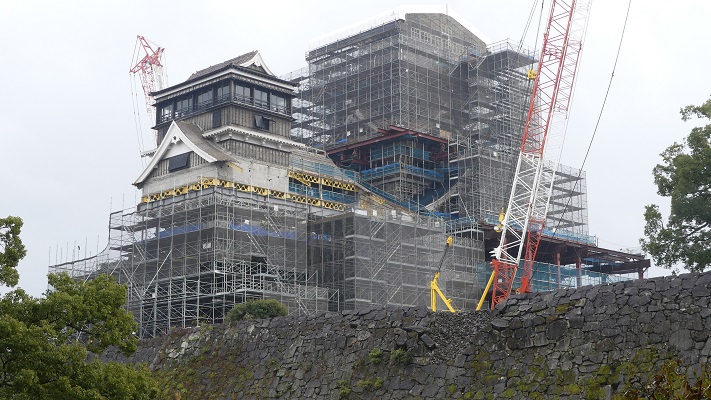
城の現存建物の中で最大の宇土櫓は、比較的少ない被害で済みました。この櫓の頑丈さが改めて認識されるとともに、地震の被害者をも勇気づけているとのことです。
Udo-turret, the largest remaining building in the castle had relatively small damage. People say that it has shown its strength and has encouraged victims of the earthquakes.
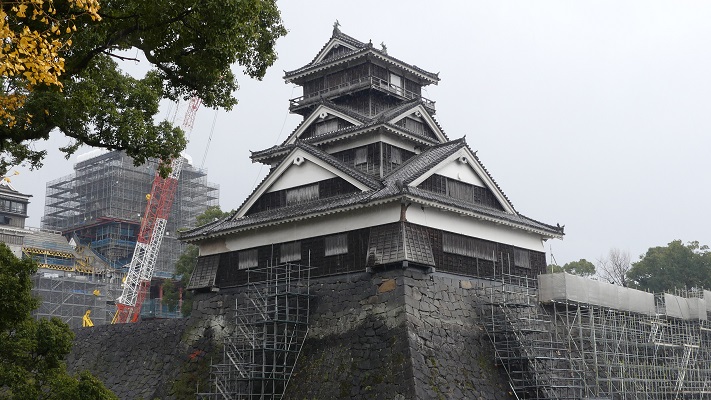
熊本市長は、天守を修理するのに3年、城全体を元通りにするのに20年かかると言っていました。その通りに天守の復元はなされており、2019年10月から部分的に公開されています。
The mayor of Kumamoto City stated that it would take 3 years to fix the Tenshu, and 20 years would be needed to restore the castle completely. As he said, the restoration of Tenshu has been done, it has partly open since October 2019.
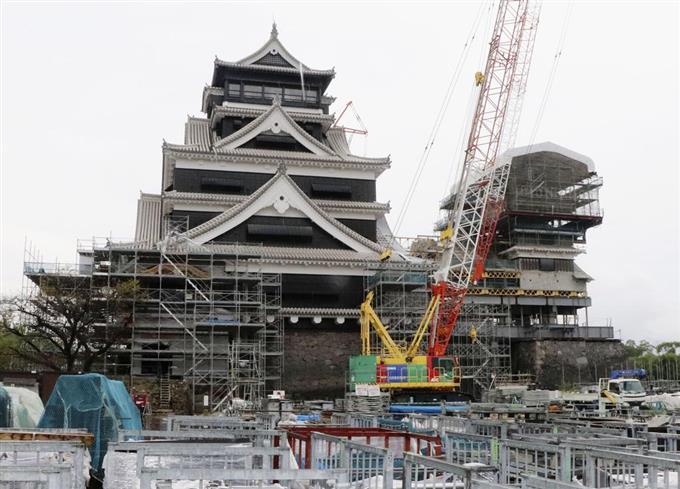
立地と歴史~Location and History
熊本城は、現在の熊本市の丘陵地帯の端に位置する茶臼山の上にあります。この城は加藤清正が1588年に肥後(現在の熊本県)の国主として着任してきてから有名になりました。清正は、薩摩国(現在の鹿児島県)の島津氏の幕府への反逆を防ぐため、この城を強大に作り込みました。加藤氏が改易となった後、その後を継いだ細川氏も江戸時代を通じて大変な労力を投じて城を維持、拡張してきました。
Kumamoto Castle has been located on a mountain called Chausu-yama on the edge of the hilly area which is now Kumamoto City. The castle became famous since Kiyomasa Kato was placed as the lord of Higo Province (what is now called Kumamoto Pref.) in 1588. Kiyomasa built the castle so large and strong that it could avoid The Shimadu’s invasion from Satsuma Province (Kagoshima Pref.) against the Shogunate. The Hosokawa clan following kato’s position after they quit, continued to keep and develop the castle making great efforts all through the Edo Period.
城周辺の起伏地図(The relief map around the castle)

明治維新後、この城は日本陸軍の九州地方の根拠地となり、「鎮西鎮台」と呼ばれました。1877年に予期もしていなかった戦いが政府軍と西郷隆盛率いる薩摩反乱軍との間で起こりました。この戦いは「西南戦争」と呼ばれ、日本最後の内戦であるとともに、政府による徴兵と西郷指揮下の元武士との戦いであるとも見なされました。
After the Meiji Restoration, the castle was turned to into a Japanese Army base in Kyushu region called “Chinzei Chindai”. An unexpected battle happened between the Government Army and the Satusma Rebel Army led by Takamori Saigo in 1877. It was called “the Seinan War”, which was the last civil war in Japan, and also regarded as a battle between drafted soldiers under the Government and former warriors under Saigo.
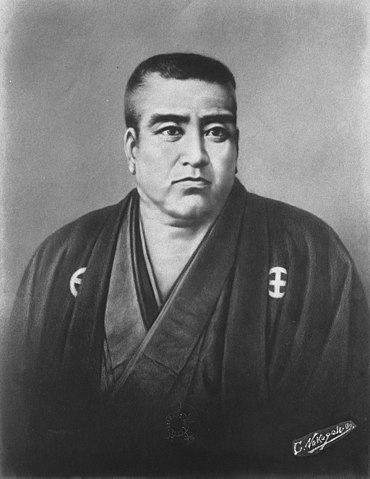
熊本城が実際の戦いに使われたのはこれが最初だったのです。西郷は城を包囲したのですが、この間天守を含む多くの建物が失火により焼けてしまいました。しかし城の中の兵隊たちは、政府からの援軍が到着するまで耐え忍び、ついに西郷は撤退しました。武士の世が終わってからの近代戦においてさえ、この城が強力であることが証明されたのです。城跡は最終的には1931年に国の史跡に指定されました。
That was the first time that Kumamoto Castle was used for actual fighting. Saigo surrounded the castle while many of the buildings including the Tenshu keep were burned accidentally. But the soldiers in the castle survived until the reinforcements from the Government arrived before Saigo withdrew. Even the modern war prove the strength of the castle after warriors’ governance ended. The ruins was finally designated as a National Historic Site in 1931.
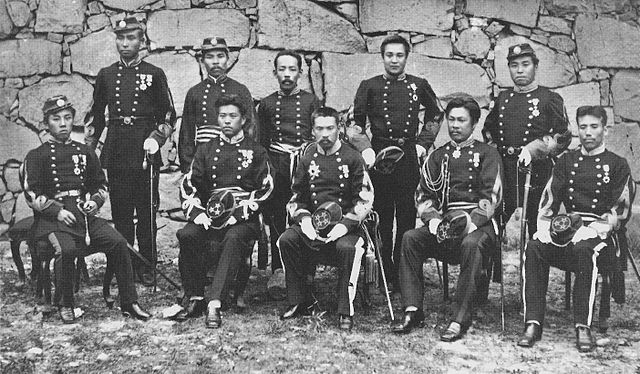
これからどうなる?~What will happen?
なぜ復元にそんなに時間がかかるかというと、熊本城が文化財だからです。例えば、崩壊した石垣の場合では、一つ一つの石は元の場所に戻されなければなりません。それぞれの石の3次元データを登録し、以前の写真と照合し、位置を確定するのです。更には、石垣を復元するのは元の伝統的工法でなければなりません。それができる企業や職人は限られています。またそれには莫大な予算も必要です。
The reason why the restoration takes so long time is mainly the castle being a cultural property. For example. In case of collapsing stone walls, each stone must be returned to the original position. Its 3-dimensional shapes are registered and checked with old pictures to match the position. In addition, restoring stone walls is required to build in the original traditional way. There are also few companies and craftsmen who can do it. it will also require huge funds.
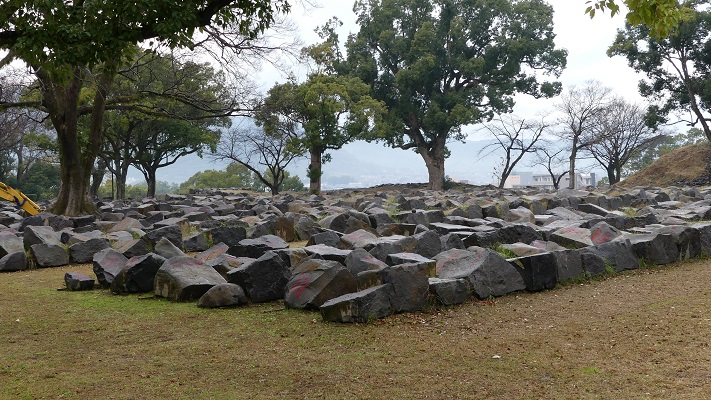
私の意見~My Opinion
私は最近現場を見て回りましたが、復元にそんなにも時間がかかることは理解できました。しかし、もしまた地震が起こったらどうするのでしょうか?清正は、あの有名な「武者返し」と呼ばれる石垣のカーブを地震による崩壊を防ぐために作ったのだと言う科学者がいます。
I looked around the site recently and also realized that the restoration would take such a long time. But what should be the plan if another earthquake happens? Some scientists say that Kiyomasa might have created the famous curve of the stone walls called “Musha-Gaeshi” to prevent it from collapse by an earthquake.
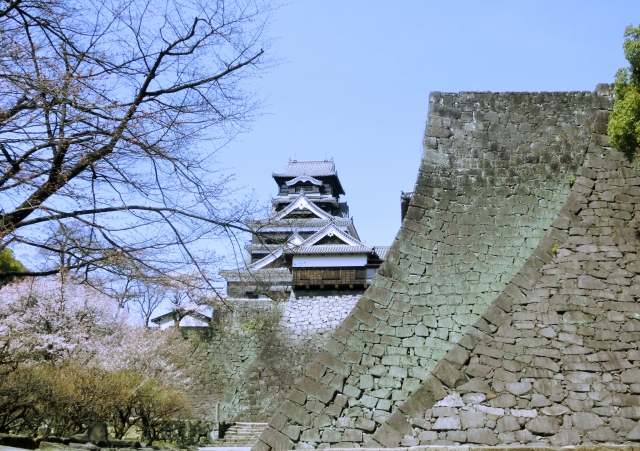
江戸時代初期のこの城の城主だった細川忠利は、余分な建物を撤去し、次来る地震に備えて「地震屋」と呼ばれる避難所を建てました。
Tadatoshi Hosokawa, a lord of the castle in the early Edo Period, removed extra buildings and built a refuge shelter called “jishinya” to be prepared for the next earthquake.

たとえ今は文化財であっても、元々のやり方が常にベストとは限りません。熊本市は、大きな地震が発生したときにも安全であるよう、長期的に城の新しい復元手法を開発するとのことです。それが早く実現するよう願ってやみません。
Even if the castle is now a cultural property, the original way is not always the best. Kumamoto City says that they will develop new methods for restoring the castle in the long term to be safe when a large earthquake happens. I really hope it will work in practice soon.
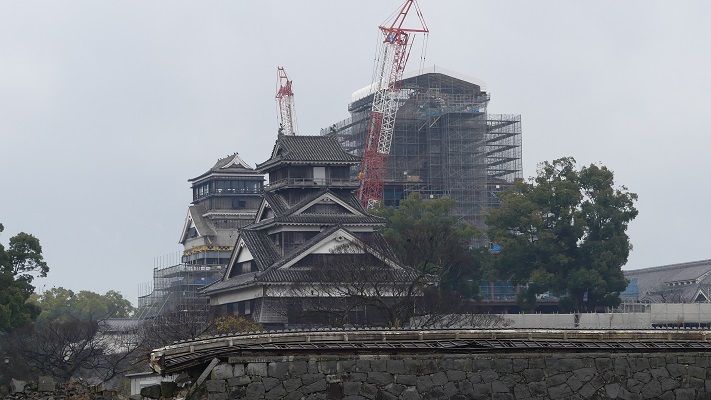
ここに行くには~How to get There
熊本駅から:
熊本市電を使うときは、熊本駅前電停から熊本城・市役所前電停まで乗ります。約17分かかります。
バスを使うときは、熊本駅前バス停から桜町バスターミナルまで乗ります。約10分かかります。
From Kumamoto Station:
When using Kumamoto City Tram, take the tram from Kumamoto-Eki-Mae tram stop to Kumamotojo-Shiyakusho-Mae tram stop. It takes about 17 minutes.
When using Bus, take it from Kumamoto-Eki-Mae bus stop to Sakuramachi bus terminal. It takes about 10 minutes.
リンク、参考情報~Links and Rererences
・熊本城公式サイト(Kumamoto Castle Official Website)
・「復興熊本城Vol.2 天守復興編Ⅰ 平成30年度上半期まで」熊本日日新聞社(Japanese Book)
・「熊本城の被災修復と細川忠利」後藤典子著、熊日新書(Japanese Book)
・「歴史群像2016年8月号/壮烈!熊本城攻防戦」学研プラス(Japanese Magazine)
・「BS1スペシャルよみがえれ熊本城 サムライの英知を未来へ」NHK、2017年(Japanese TV Program)

